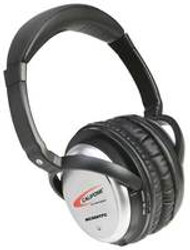Safe Headphone Volume Controls
5th Jun 2014
Safe Headphone Volume Controls
10th in a series about classroom headphones and headsets.
The sense of hearing is used as much as if not more than any of the other senses by students to learn in school. But at the same time, it is also the one which students must be taught how to listen properly with headphones in order to avoid damaging their hearing. From a very young age, we are presented with multiple stimuli that could adversely affect our hearing and this continues throughout our entire lives. This could not be truer than in a classroom environment where audio equipment is within reach of students of any age. What can be done to protect children’s hearing as much as possible before it is too late?
Amongst some of the most popular audio equipment supplied to schools are headphones and headsets that students use for language learning, (storybook) reading, ELL and other multimedia applications. Allowing headphones and headsets to be played too loud can be detrimental unless the necessary precautions are taken. Ensuring that there is a way to control the volume levels on this type of audio equipment can certainly go a long way toward protecting students’ hearing. Califone offers three different approaches to this issue with headphones which have individual volume controls on the earcups or in-line (on the cord), and those which don’t have any volume adjustments so they can be controlled instead by the teacher at the jackbox or the audio source (computer or media player).

Volume adjustment on the earcup of the 3068AV (left) or in-line on the 3060AV (right)
There are six Califone headphones which have volume control on the earcups. The rugged, monaural 2924AVPV headphone and the 2924AVPS stereo headphone each has a volume control on one earcup as do the wireless CLS7XX series, 35IR and 34IR headphones. The best selling Switchable Mono/Stereo 3068AV headphone has a volume control knob on each earcup for comfort. Shares Leta Lemon, a Kindergarten teacher from Phoenix, AZ: “The 3068AV headphones have a volume adjustment so the kids aren’t blasted out with some programs that override the volume adjustment I set on the computers.” Not only does it matter to have the appropriate earcup size suitable for individual students to protect their hearing but having volume controls on those earcups is also an essential component. This type of safety feature not only helps children to hear at a proper volume level so as to not cause permanent damage at an early age but it also teaches students the importance of caring about and protecting their long-term hearing for safe listening practices.
For teachers or students who prefer the second option of the volume control on the cord, other headphones such as the lightweight stereo 3060 series, the Active Noise Canceling Headphone (NC500TFC) as well as the Listening First™ animal headphones all have an in-line volume control. With the exception of the 3066 headset, which has its volume control on one earcup, all other headsets such as the 3064 and the 4100USB have their volume control in-line as well so students can adjust volume levels accordingly when faced with computer programs that inadvertently dominate the sound coming out of the headset. “The 3060AV headphones help our K-5 children to concentrate on the task on the computer screen by filtering out distractive noises. It also makes the classroom quieter” shared Adelicia Moses, the Principal of PS 158 Warwick, in New York City.
Still some teachers prefer their headphones not have any volume control whatsoever and this is where the monaural 2924AV, 2924AVC, and the stereo CA-2 & solid color Listening First headphones come into play.
So no matter the where the volume is controlled from, it’s important to follow the proper hearing guidelines recommended in the “Listen to your Buds” campaign by the American-Speech-Language-Hearing Association. When it comes to learning about headphones and headsets and how they function, knowing how volume levels can be managed for the best interest of students is an important element that must be put into practice from a young age and beyond.






